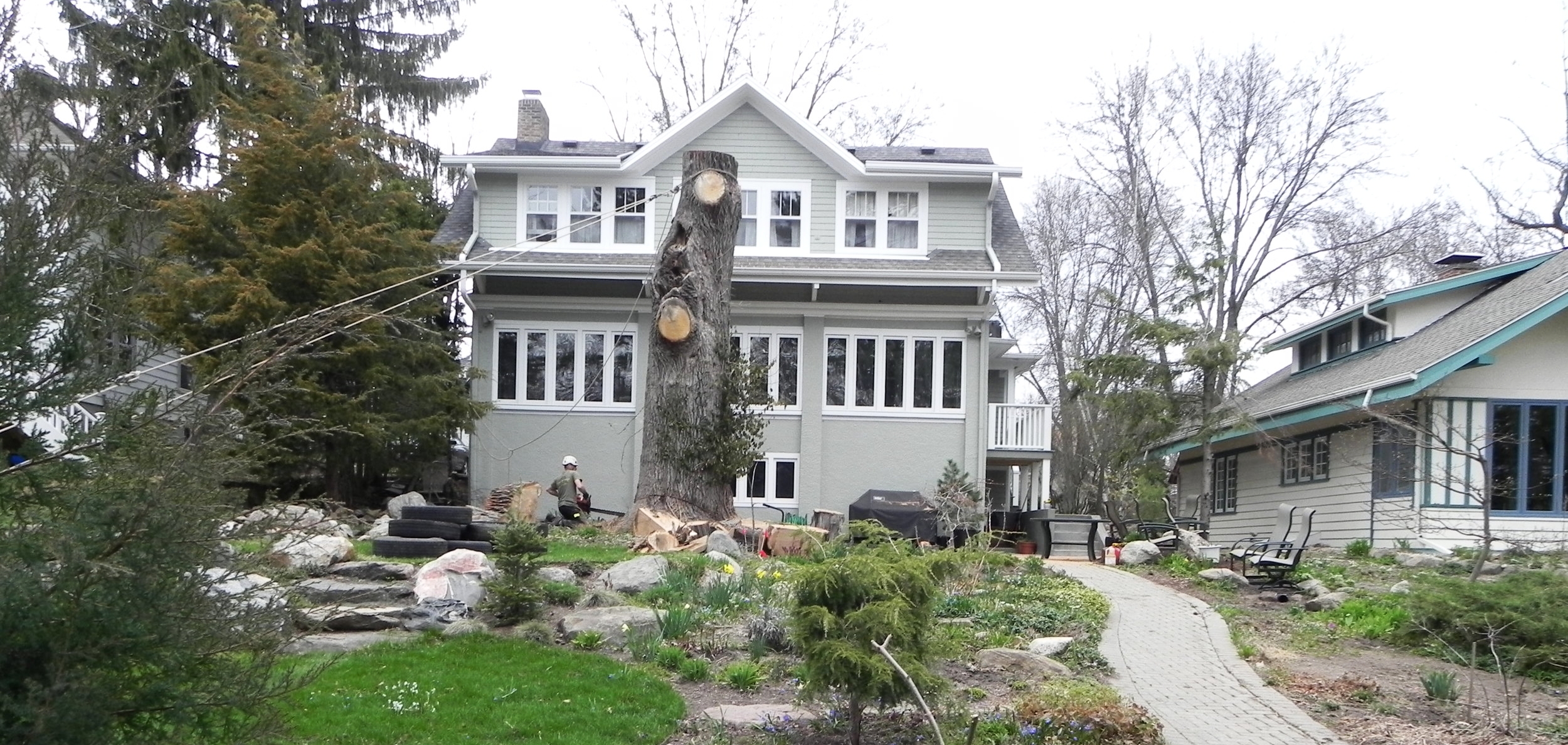What's My Log Worth?
What is my log worth?
The quick answer is an urban log is usually worth little or nothing. The following is an excerpt from Paul’s book Tree to Table.
To give you a frame of reference
And the why: a woodlot-grown hardwood tree will yield 3-4 logs that are of greater quality than you see in the urban landscape. These woodlot logs commonly have a market value of perhaps $100-200 and have little steel in them, unlike urban logs. Higher value species and larger size trees may go higher, but many trees are even less. In addition to generally higher quality logs, there are many logs at one location and all the junk wood and limbs can be left where they fall.
Modern woodlot harvests also employ heavy equipment that can move multiple logs with ease, some without a single human hand touching the tree or its wood until the individual boards are sorted based on their quality. A fully mechanized logging crew may move several hundred logs to a landing in a single day.
the arborist’s perspective
Now look at this from an arborist’s perspective. The arborist is dealing with a shorter tree that may have only one or two logs with a true market value of $25 to $100. If they are managing a full day removal project requiring a three to five-person crew, how much time can they afford to invest in those couple logs? Typically the biggest component in an arborist’s calculations is getting the tree on the ground. Then, once the tree is down, it is already later in the day and the priorities shift to the most efficient way to pick up and clean up the job-site before leaving for the day. With equipment scaled to fit into a backyard, the larger the log, the more difficult it is to remove in a salable length.
Finally, look at the urban log from the sawyer’s perspective. A sawyer can get ready access to woodlot logs that are straighter with fewer defects and with next to nothing for nails or other hardware. They can produce more lumber of better market value when sawing, and they will have less down time from unseen hardware.
Four factors that influence log value
With all this in mind, we can look at four principal factors that influence log value, whether that log be urban or woodlot sourced: species, size, quality and location.
Species relates to desirable traits of the finished product. Walnut and cherry are well recognized woods with a strong market demand, so these logs tend to have higher value. Regardless of other factors, some species do not have a value, since specific buyers are harder to find.
Size, or for that matter the number of logs available at a single time and place greatly impact value, since the time commitment to pick up one log verse five, or a small log versus a large log may be much the same. Costs are typically not that much different to pick up a full semi load of logs or just one.
Log quality relates to what can be expected from the log. Size can play a big role on log quality. Quality, however, may not follow traditional log grading standards, since the urban sawyer tends to look at a broader client base than most lumber yards. A traditional straight and clean-looking log is obviously desired for traditional lumber whether grown in a woodlot or backyard. Although, if the log is being considered for live edge lumber, bumps and knobs might not be a down-grade. A larger branch union, for example, might make the urban sawyer think figured coffee table slabs or kitchen island tops, while the commercial logger is more prone to see waste material. Essentially all this falls to the artistic eye of the sawyer, based on past experiences with similar shapes.
Location, location, location. Ideally, one log is located next to the next, next to the next - a woodlot setting. In a woodlot, the mess can be left behind and a day’s work is measured by the semi-loads produced. At the opposite end of the location spectrum is a single log in a tight back yard with limited access. That log typically has a cost not a value. A good log at the front curb or along the driveway is closer to cost neutral; probably about the same value as the cost to come pick it up. A pile of several good logs in the arborist’s yard that can be picked up when time permits almost certainly have some value. And, finally, a log delivered to the mill almost always has some value. If there is a pile of those logs with good size and high quality and in the same species, value is evident in most any species - but that again is usually a woodlot scenario.
Promising trees may not yield valuable logs
Any one of these points can make or break an urban wood proposal. Even in those circumstances where I am discussing value that a tree may have, I must point out that this is all secondary to the primary service of the tree. The decision to keep or remove the tree must usually be made on the assumption of no value. If the tree is rotted or found to be loaded with nails during removal, the value immediately drops to zero and the log must still be removed.


